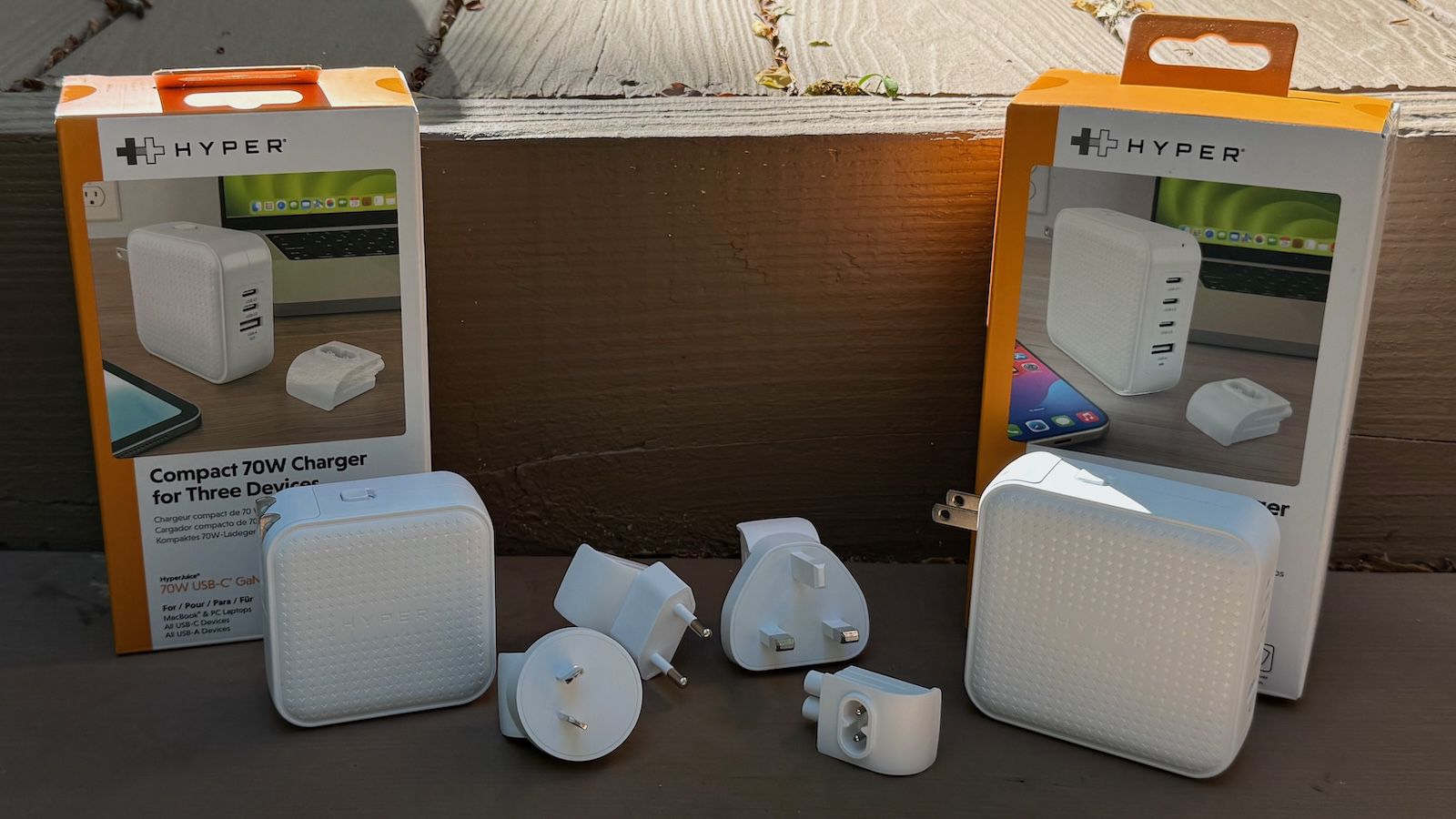Hyper Unveils New Line of GaN USB Chargers Perfect for Travel











2025-04-09T20:59:39Z

Several months ago, accessory company Hyper launched an innovative line of three USB chargers specifically engineered with travel convenience in mind. These chargers leverage the compact capabilities of Gallium Nitride (GaN) technology and feature interchangeable charging heads, making them ideal for international travel.
As part of my hands-on experience, I tested both the 70W charger priced at $59.99 and the more robust 100W model retailing for $89.99. Recently, Hyper expanded its lineup by introducing a powerful 145W version, which is available for $119.99. Excitingly, all three chargers are currently included in Hyper's spring sale, offering a generous 20% discount off their regular prices.
The design of these chargers is consistently sleek, with a minimalist plastic exterior available in classic black or white. Each model showcases subtle Hyper branding, along with a distinctive pattern of tiny '+' icons that reflects the company's logo, adding both visual and tactile interest. A small LED light situated beneath the USB-A port in each charger glows blue when the unit is powered, which is a useful feature but isn't overly distracting when used in a dark room.
In terms of size, its not surprising that the dimensions of the chargers increase with wattage. The 70W version is the most compact, scaling down to two USB-C ports in addition to one USB-A port. In contrast, both the 100W and 145W models are equipped with three USB-C ports and one USB-A port. Weight also increases with wattagewhile the 70W charger is a lightweight option at just under half a pound, the 100W model weighs three-quarters of a pound. The 145W is heftier, nearly reaching a full pound.
GaN technology has been gaining traction, especially with major tech companies like Apple adopting it for their high-powered chargers. However, in this case, Hypers chargers are somewhat bulkier. For instance, the Hyper 70W model is about 30-40% larger and heavier than Apples equivalent charger, and the 145W model exceeds Apples 140W charger by approximately 20% in size and a staggering 50% in weight. Despite this, Hyper stands out by offering multiple ports, which is a significant advantage for frequent travelers who need to charge several devices simultaneously.
Though these chargers may not be the absolute most compact options on the market for their wattage, they are still reasonably sized and make for reliable travel companions. They come equipped with a two-prong US-style Type A charging head that features folding prongs, enhancing their portability.
For those who require alternatives for international charging, Hyper thoughtfully includes additional charging heads in the box. These include European-style Type C, UK-style Type G, and Australian-style Type I heads, all of which can be swapped in mere seconds thanks to a convenient quick-release button. While the prongs on these additional heads aren't foldable, this is typical, as the US design is more conducive to folding mechanisms.
Though I haven't had the chance to test these chargers internationally yet, I find the inclusion of interchangeable charging heads especially useful, as they enable functionality in over 150 countries. This feature is particularly beneficial for globetrotters who need reliable charging options wherever they go.
In addition to the international charging heads, Hyper also provides a C8 head that allows users to connect a power cable (sold separately for $5.99) if they prefer using the charger on a desktop or in situations where a direct plug-in isnt feasible.
All three models come equipped with intelligent power distribution capabilities, which dynamically allocate charging power according to the devices connected. For example, the 70W model supports up to 70 watts through each USB-C port, while the USB-A port can handle up to 18 watts. However, if multiple devices are connected, the total output of 70W will be divided among the various ports.
The 100W model can provide full power of 100 watts via its top two USB-C ports when used alone, while the third USB-C port supports 27 watts, and the USB-A port reaches 18 watts. The largest 145W charger offers even greater versatility, with the top two USB-C ports providing a substantial 140 watts together, the third USB-C port supporting 45 watts, and the USB-A port maxing out at 18 watts.
With the inclusion of three to four ports in each model, users can create numerous combinations for charging. For instance, using both USB-C ports on the 70W model simultaneously results in a distribution of 45 watts to the first port and 25 watts to the second. Adding a device to the USB-A port alters this to 35 watts for the first USB-C port, 20 watts for the second, and 12 watts for the USB-A port.
In conclusion, the charger model you choose will significantly depend on your specific needs and the types of devices you typically power. For instance, if you own a MacBook Air, the 70W charger may be sufficient, as it allows you to charge your laptop while still having available power for other devices like an iPhone or iPad. On the other hand, if you utilize a MacBook Pro or frequently charge multiple devices at higher speeds, opting for one of the higher-wattage models would be advisable.
 Hans Schneider
Hans Schneider
Source of the news: MacRumors